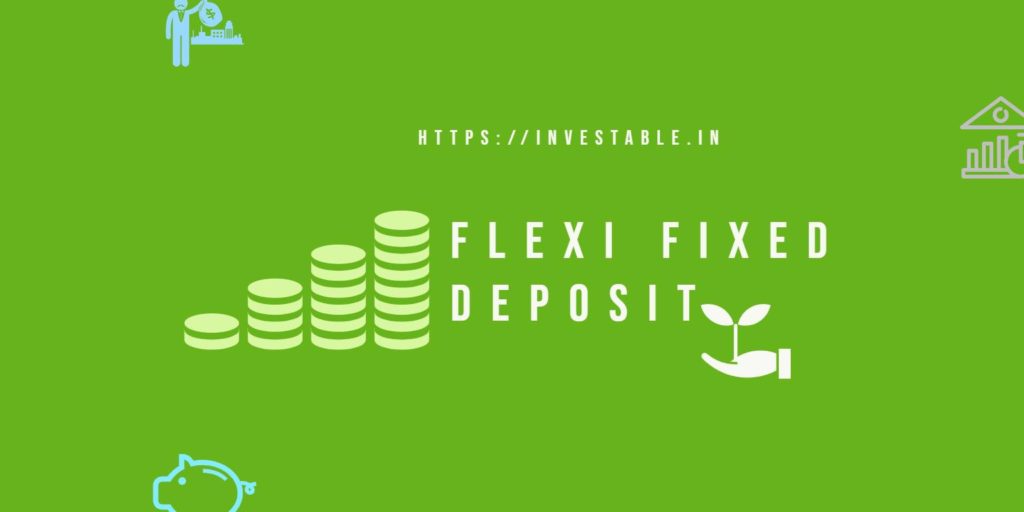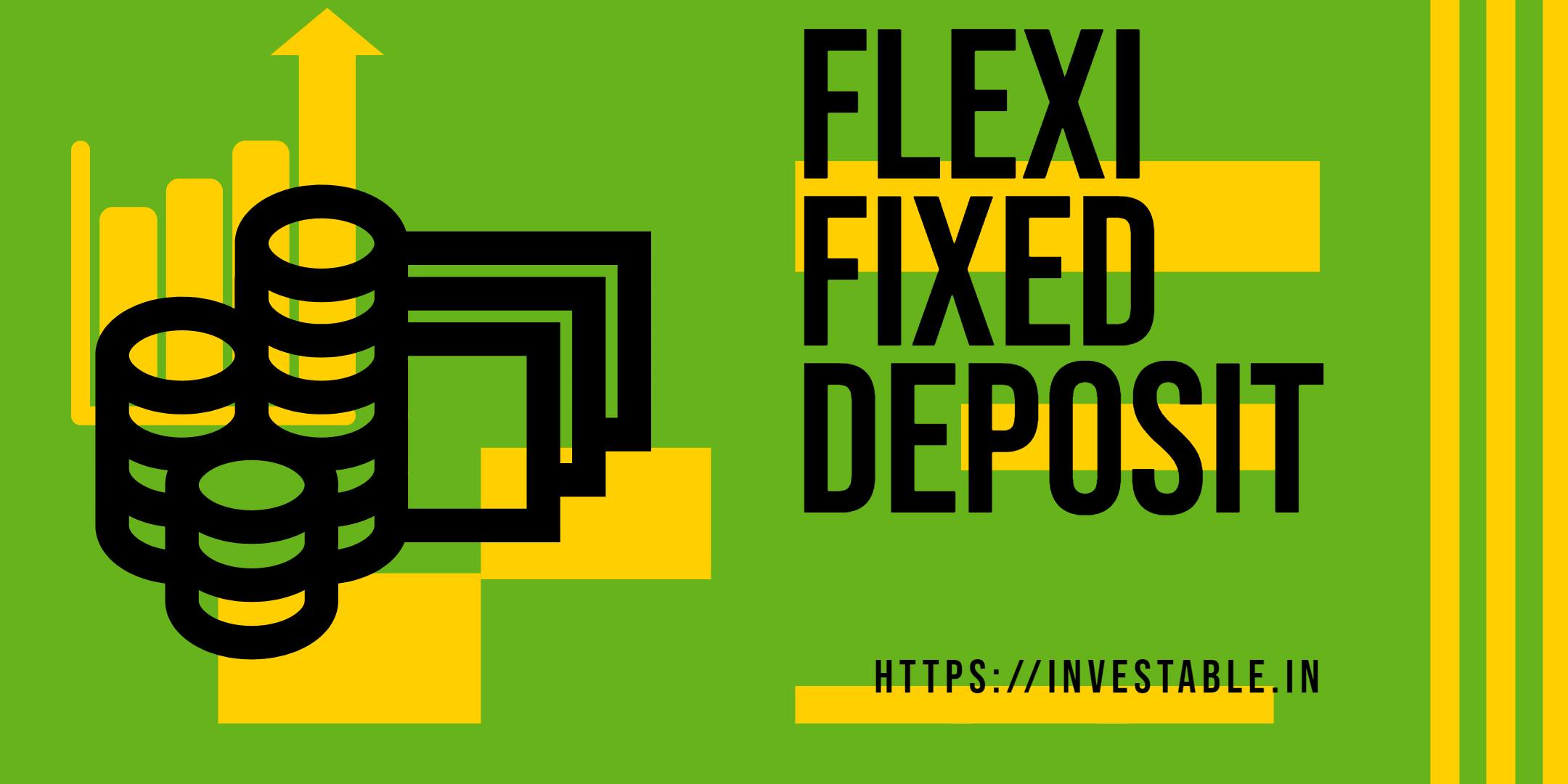There’s a reason why humans are one of the smartest beings of this mother earth, and the reason is they know to evolve with time. We live in such a world, where we keep doing experiments to create something which will not only bring stability in our lives but also provide more benefits. We have implemented this hybrid mentality to everything from food to jewelry to transportation, so why not in the investment horizon. Our habit of mixing the features of different products, and creating a brand new advanced product, in order to experience the best possible outcome, is known to all.

The new age banks have understood the need of the hour, and has already introduced a new kind of investment tool i.e. called as the Flexi Fixed Deposit (FFD). It has been specifically created in order to combine different features into one single product, so that it can easily help investors to improve their quality of lives by bridging the gaps as much as possible.
It is a type of a special fixed deposit scheme introduced by the top most banks of India and other countries in order to provide flexibility and convenience to its customers. It is becoming quite popular nowadays, and it’s basically nothing but a nice combination of a fixed deposit account and a savings/current account. Flexi Fixed Deposit (FFD) ensures that the account holder is able to enjoy the higher interest rates offered by the fixed deposit schemes and the liquidity offered by the current/savings account both.
In most cases a Flexi Fixed Deposit scheme follows the “Reverse Sweep” methodology, which I will try to explain now with the following example.
Suppose you have a flexi fixed deposit account with a certain bank, and you have also linked your savings/current account with that FFD account. Let’s assume you have 20000 INR in your savings account and 50000 in your fixed deposit account. Now if you try to withdraw 30000 INR from your account in the form of cheque or ATM or by any other means, then in order to honor that debit instruction, the extra 10000 INR will be debited from your fixed deposit account. So now your savings account will have a zero balance and your FD account will have 40000 INR balance, and this remaining funds will continue to earn higher interest at the original rate applicable to the existing FDs.
So in short, in case of an account holder wants to withdraw more amount of money than what is deposited in his/her savings account, then the excess amount will be adjusted from the fixed deposit component to honor debit instruction.
In order to survive every species of this world has tried to evolve with time, and those who didn’t manage to do that successfully were extinct. This “survival of the fittest” rule applies to the finance and investment tools as well. It is quite apparent that the Flexi Fixed Deposit schemes are having some serious advantages over the traditional fixed deposit offerings, and this section we will try to explain those benefits.
Choice of Amount and Time
As a customer you can easily decide the amount that you would like to invest in the FFD schemes. You can also choose the exact tenure that you think suits your requirements. However, you must check with your preferred bank, because the minimum amount and tenure generally varies from one bank to the other.
Freedom of Liquidity
If you open a FFD account, and link it with your savings or current account, then you will be automatically provided with freedom of liquidity. This instantly offers peace of mind for the account holder, as they don’t get a feeling that their money is stuck.
Flexible Withdrawal
The most annoying thing with the traditional FDs is that you just can’t prematurely withdraw your own amount. In fact if you are in dire need of the amount, and don’t have other options than premature withdrawal, then the bank will levy hefty penalty on you. But, in the case of the Flexi Fixed Deposits, we can withdraw our amount whenever you need, there’s no penalty whatsoever for premature withdrawal. That’s why the new age FFD schemes are getting lots of traction nowadays as it offers premature withdrawal to ensure the liquidity for the customers in times of need.
Auto Renew Features
Almost all the banks offers auto renew option for their respective FFD schemes. So you don’t need to remember the exact dates in order to ensure that your flexi fixed deposit account is getting renewed. Automatic renewal is actually making investment in FFDs hassle-free and quick.
Easy Loan Facility
If you need some quick cash for something, then you can easily pledge your Flexi Fixed Deposit as collateral in order to apply for a loan. However, some banks don’t allow loans on FFDs, so you need to check that with your banks.
High or Better Rate of Interest
A Flexi Fixed Deposit Account earns a much better rate of interest than Savings/Current account. In fact, in spite of offering flexibility and liquidity, it offers high interest rates, so that a depositor can build a large corpus over time by earning more money on their savings and investments.
Almost all the top banks of India allows its depositors to open FFD account with them. So we must thoroughly compare in order to choose the ideal one. Here, I will be talking about my favorite ones, which, in my opinion, are the 5 Best Flexi Fixed Deposit Schemes of India right now.
- ICICI Flexi Fixed Deposit Scheme
- Axis Encash 24 Flexi Deposit Scheme
- SBI Flexi Deposit Scheme
- Union Flexi Savings Deposit Scheme
- BoB Suvidha Fixed Deposit Scheme
Conclusion
I have started Investable to make people aware about different products related to our financial sectors, so that people can understand the real value of investing. I am assuming that this article will be able to make you aware about the Flexi Fixed Deposit schemes, and their importance. If you have any doubts or questions regarding this then you can ask that in the comments below.

What are your thoughts on high interest rate FDs offered by small banks like jana bank? A branch near me is offering upto 9% interest rate but I’m unsure whether its safe or not.